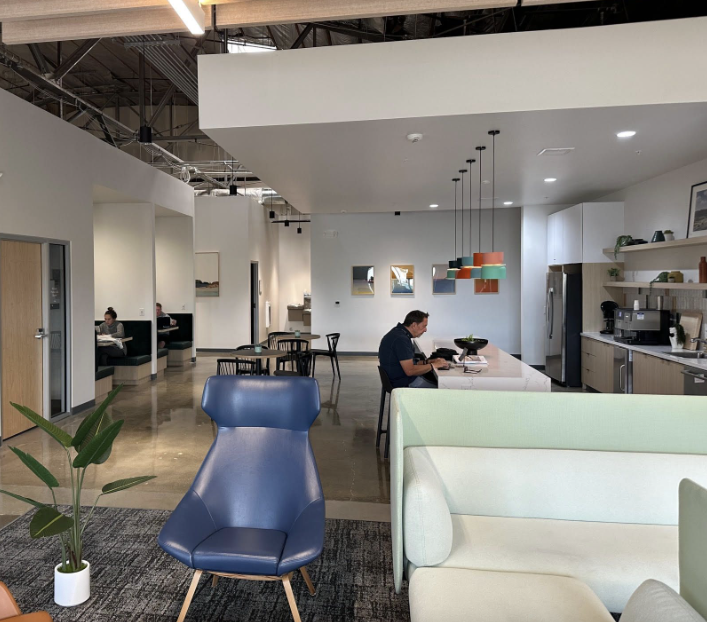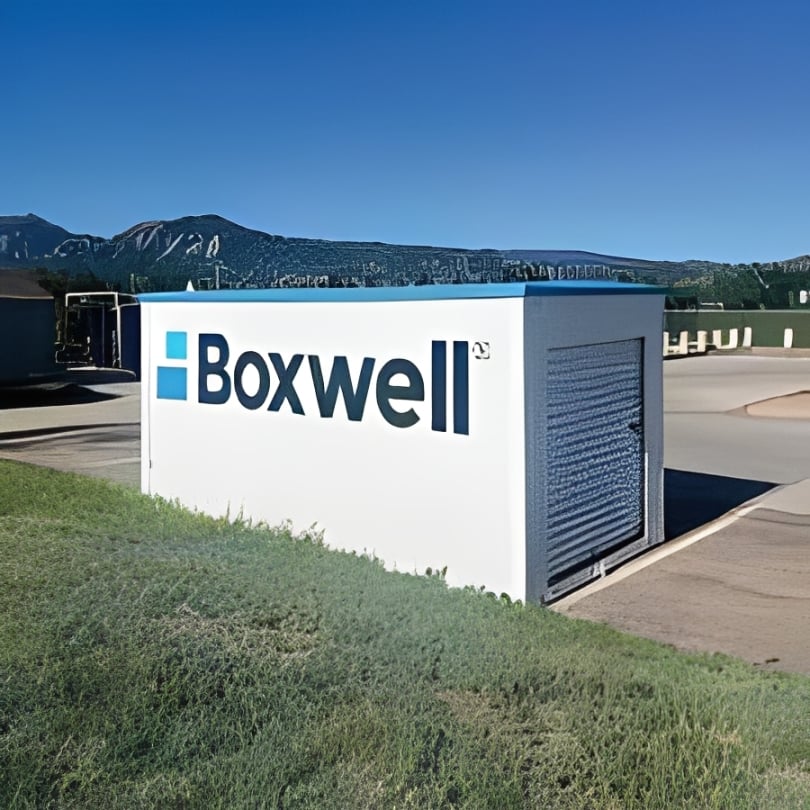Skydock: The Modern Marina
The Rise Of Urban Powerboat Ownership
In some of America’s most developed and densely populated coastal cities, the experience of boating–or, more specifically, boat ownership–can often be as stressful as it is rewarding. In these locations, where undeveloped shoreline is at a premium, the complexities caused by the increasing scarcity of boat slips and other docking options only add to the time, energy, and anxiety that boat owners must dedicate to the routine servicing and maintenance of their vessel.
But an innovation to the current model for boat storage and docking may reverse this outlook entirely. Enter Skydock, the modern marina, a high-rise facility capable of automated vertical storage and docking of approximately 800 powerboats. As a new take on boating accessibility, the Skydock may soon prove to be the answer to shoreline and boat-slip scarcity, while greatly improving the overall experience of boat ownership and serving as a catalyst for further waterfront development for residential and industrial uses.
A New Era
For prospective boat owners in some of the fastest growing areas of the country, the opportunity to experience the joys of boat ownership is rapidly shrinking, as the scarcity of waterfront access, and thus boat-slip access, is only getting worse. In Chicago, a city with more than 2.7 million residents and 14 miles of shoreline on Lake Michigan, the fifth largest lake in world, there are only about 6,000 total marina slips and harbor moorings. Chicago’s 10 harbors and marinas have a combined waiting list hundreds of names long.
Over 100 years ago, in the late 1800s, when centrally located land in bustling urban environments like Chicago began to become overcrowded, the problem was solved by building structures upwards instead of outwards. On the waterfront, the Skydock, just as the skyscraper in the heart of the city, offers a simple and elegant solution for maximizing the utility of high value real estate.
To lift immense power boats from their active state on the water, the Skydock is outfitted with two computer-operated bridge cranes, each with a load capacity of 12 tons–or the weight of roughly three male African elephants. The fully automated smart cranes are preprogrammed with the weight and dimension of each specific boat, ensuring precise delivery from an owner’s storage unit to the facility’s harbor and docking area.
The use of the smart cranes to vertically stack boats into Skydock’s individual storage units greatly reduces the amount of shoreline and area on the water that is needed for mass boat storage and docking. Skydock is able to vertically hold 800 boats in the same amount of space that a contemporary marina might hold 100.
Marina Makeovers
Even for those fortunate enough to secure a viable marina slip in a coastal city, the logistical hurdles of boat ownership and accessibility are still far from over. A nautical vessel’s extended exposure to water, sun, salt, and shifting weather conditions requires constant maintenance, regular cleaning, and frequent repairs. And, in locations greatly affected by seasonal weather, winter demands that boats are removed from the water and stored safely off-site, necessitating special accommodations for transportation.
For boats moored in a harbor, and not conveniently tucked into a marina slip, something as routine as simply boarding such a vessel presents yet another complication. Despite the nearly two and half centuries of technological progress that have given rise to electric-powered, artificially intelligent automobiles on America’s streets and access to all the information in the universe in Americans’ pockets, dinghies are still tolerated as convention for maneuvering America’s harbors.
Just as the Skydock completely solves the equation for maximizing boat storage capacity on finite waterfront real estate, the Skydock also significantly elevates the level of comfort and quality of the urban boat owner’s experience while additionally reducing the necessary investment of time and energy.
Instead of budgeting significant time to the front and back ends of excursions for maintaining, cleaning, provisioning, and fueling (and, in a dinghy situation, accessing) a boat in a harbor or marina, Skydock members may remotely schedule services and access to their boat in advance.
As easy as calling an Uber, and as accommodating as flying a private charter, Skydock members may select a time to have their boat ready and docked in the facility’s small harbor, with additional options to have the boat fueled and stocked with food, beverages, fishing tackle, bait, or other supplies. Upon return, members may select to have their boat cleaned and inspected before it is automatically loaded back into its custom storage locker.
The Skydock adds even more convenience in climates affected by colder winters by eliminating the annual hassle of transportation to and from off-site boat storage locations at the beginning and end of each season.
A dining room and member locker rooms round out Skydock as a comprehensive waterfront facility, taking the experience of owning a boat in a coastal city from a potential logistical nightmare to a purely enjoyable activity that requires an investment of time and energy similar to picking up dry-cleaning.

Catalyst For Development
The Skydock creates the opportunity for development on any shoreline, regardless of whether it is built on the coastline of a tight urban environment or the shores of an under-developed lake. Even in areas where enough viable waterfront land is available for the placement of a traditional harbor or marina, the Skydock’s primary function of maximizing the efficiency of its footprint by centralizing boat storage and docking provides measurable value by allowing the neighboring area to remain available for development of additional waterfront structures.
And as an attractive, useful, and environmentally friendly focal point for shoreline activity, the Skydock makes a very welcoming neighbor, indeed. Tasteful exterior design that features cladding of metal panels and glass corners with vertical displays of the facility’s stored powerboats gives the structure a magnetizing beauty that will instantly elevate the status of the surrounding real estate. The structure’s green features include clerestory windows for daylighting, facility parking lot bio-swale drainage, and vertical gardening at the building’s base.
The Skydock is the modern solution for the old problems that have long plagued the state of urban boat ownership. By maximizing real estate on the crowded shorelines of growing coastal cities and helping boat owners to overcome the downside caused by the grind of maintaining, storing, accessing, and transporting their vessel, premium, crane-operated vertical storage facilities like the Skydock will soon usher in a new era of urban boating and aquatic recreation.
Mark J. Sullivan is the President and Managing Principal of Sullivan, Goulette & Wilson Ltd. He was cofounder of the firm in 1994, and oversees its operations, including Urban Design and Land Planning. Mr. Sullivan is a registered architect in the states of Illinois, Florida, Michigan, Maine, Pennsylvania, New Jersey, Massachusetts, and Hawaii. Mark Price, Senior Project Architect with experience in education, mixed use, high rise, multi-family residential and commercial office buildings and self storage. He specializes inadaptive reuse and is currently managing 25 projects. Mark is a graduate of University of Illinois at Chicago where he received his bachelor’s in architecture.
More Content
Popular Posts
The self storage industry is in a precarious...
Joe Shoen, CEO of U-Haul, has had enough.
Like its name implies, Surprise, Ariz., a...
Joe Shoen has had enough.
In a record-breaking deal finalized May 12,...
Senate Bill 709 (SB709) has many in the...
Donald Trump has just reclaimed the White...
The question of “abandonment” of stored...
Self-storage operators wear a lot of hats....
In 1992, Clinton strategist James Carville...
Recent Posts
From policy pivots in Ottawa to tariff...
Self-storage operators have struggled to...
Their signature red coats may draw attention...
Nailing down Josh and Melissa Huff for an...
Most self-storage operators are running...
The storage industry has long been a sound...
Despite widespread adoption of modern...
This year marks a major milestone for...



















